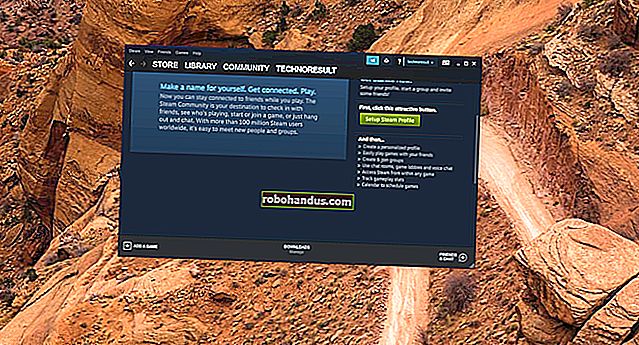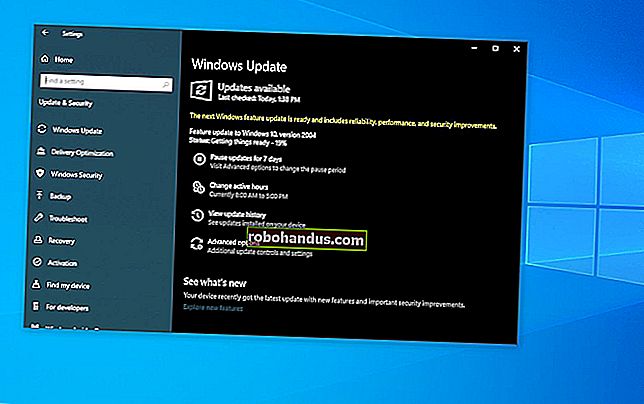Raspberry Pi'yi Her Zaman Açık BitTorrent Kutusuna Dönüştürme

BitTorrent istemciniz için özel bir makineye sahip olmak idealdir, böylece 24/7 tohumlama yapabilirsiniz. Ancak tam donanımlı bir teçhizatı sık sık çalışır durumda bırakmak enerji yoğun bir iştir. Raspberry Pi'ye girin.
İLGİLİ: Enerji Kullanımınızı Ölçmek İçin Nasıl Yapılır Geek Kılavuzu
Çoğu masaüstü bilgisayar makul miktarda enerji tüketir - örneğin mütevazı ev ofis sunucumuz yılda yaklaşık 200 dolar değerinde elektrik tüketir. Raspberry Pi ise mobil bir işlemcinin etrafına inşa edilmiştir ve sinekkuşu gibi enerji yutar. Çekirdek Raspberry Pi kartı yılda 3 dolardan daha az enerji kullanıyor ve hatta birkaç harici sabit disk ekleyerek yıllık işletme maliyetlerinizi bir hamburger ve patates kızartmasından daha az tutacaksınız.
Ayrıca, torrent indirmeye gelince, her zaman açık bir makine kraldır. Torrentlerle, bulutu ne kadar çok izlerseniz ve içine yerleştirirseniz, izleyicinizdeki oranınız o kadar iyi olur (herkese açık izleyicilerden sızıyor olsanız bile, her zaman açık bir makine, bu nadir dosyalar ortaya çıktığında orada olmanızı sağlar) .
Kulağa hoş geliyorsa, Pi'nizi tamamen uzaktan kumandalı bir indirme makinesine nasıl dönüştüreceğinizi gösterdiğimiz için okumaya devam edin.
Neye ihtiyacın var

Bu eğitim için, Raspbian kurulu bir Raspberry Pi üniteniz olduğunu, cihaza doğrudan bağlı bir monitör ve klavye aracılığıyla veya SSH ve VNC aracılığıyla uzaktan erişebileceğinizi ve harici bir USB sürücünüz (veya sürücüler) olduğunu varsayıyoruz. ona bağlı. Bu alanlarda hızlanmanız gerekiyorsa, aşağıdaki kılavuzları burada listelediğimiz sırayla okumanızı önemle tavsiye ederiz:
- Raspberry Pi'ye Başlarken Bilmeniz Gereken Her Şey
- Raspberry Pi'nizi Uzak Kabuk, Masaüstü ve Dosya Aktarımı için Yapılandırma
- Raspberry Pi'yi Düşük Güçlü Ağ Depolama Cihazına Dönüştürme
İlk öğreticideki her şey gereklidir. ikinci öğretici isteğe bağlıdır (ancak bu proje için uzaktan erişim inanılmaz derecede kullanışlıdır, çünkü bir indirme kutusu başsız bir yapı için mükemmel bir adaydır) ve üçüncü öğreticinin en önemli kısmı, sabit sürücüyü kurmak ve yapılandırmaktır. önyükleme sırasında otomatik olarak monte etmek için (üçüncü kılavuzda açıklandığı gibi).
İLGİLİ: BitTorrent Trafiğinizi Nasıl Anonim Hale Getirir ve Şifreler
Buna ek olarak, anonim indirme için bir BitTorrent istemcisi kurmanın tüm ayrıntılarına aşina değilseniz, onu okumalısınız. Sen kesinlikle güvenle BitTorrent kullanmak için yerinde proxy veya VPN sistemini anonim duruma çeşit gerekir. Bu kılavuzda bahsedilen proxy ucuz ve kolaydır, ancak iyi bir VPN genellikle daha hızlı ve çok yönlüdür, bu nedenle bunun yerine bir VPN istiyorsanız bu kılavuzu inceleyin.
Tüm malzemeleri gözden geçirip Pi'yi yapılandırdıktan sonra, Pi'nizi sessiz ve ultra düşük güçlü bir indirme canavarına dönüştürme işine geçmenin zamanı geldi.
Birinci Adım: Raspbian'a Deluge yükleyin

Linux için dikkate değer birkaç BitTorrent istemcisi var, ancak Deluge'yi öneriyoruz. bu sadece özelliklerin ve ayak izinin doğru dengesidir, böylece kendinizi bundan bir ay sonra daha güçlü bir şey kurmuş olmayı dileyerek bulmayacaksınız.
Deluge'u birden fazla şekilde yapılandırabilirsiniz, ancak tüm yapılandırmalar bu başsız Pi indirme kutusu için uygun değildir. Çoğu kişi torrent istemcisini diğer uygulamalar gibi masaüstünde kullanıyor olsa da, bu bizim amaçlarımız için pek iyi çalışmıyor, çünkü torrentlerinizle her etkileşimde bulunmak istediğinizde, uzaktan kutuya giriş yapmanız gerekeceği anlamına geliyor. masaüstü ve masaüstü istemcisiyle uğraşın. Zamanınızı boşa harcar ve kaynakları Pi'de israf eder.
Deluge istemcisine başka bir makinedeki bir tarayıcıdan erişmenizi sağlayan Deluge WebUI'yi çalıştırabilirsiniz. Bu, Deluge'yi görüntülemek ve kontrol etmek için bir akıllı telefon uygulaması kullanma potansiyelini açığa çıkarmasına rağmen, yine de tercih ettiğimiz seçenek değil (bundan sonra daha fazlası).
Uzak makinede Deluge'yi ThinClient bağlantılarını kabul edecek şekilde yapılandırmanızı öneririz. Bu şekilde, Raspberry Pi Deluge kurulumunu kontrol etmek için gerçek Deluge masaüstü istemcisini başka bir bilgisayarda (Windows, Linux veya OS X kutusu olabilir) kullanabiliriz. Tüm eylem uzak kutuda gerçekleşirken, masaüstü istemcisinin tüm avantajlarını gerçek masaüstünüzde elde edersiniz.
Bu iki seçenek arasında karar veremiyorsanız, aslında ikisini birlikte kullanabilirsiniz, ancak kurulum biraz daha uzun sürecektir. Bunu yapmak için aşağıdaki her iki bölümdeki talimatları izlemeniz yeterlidir.
Birinci Seçenek: ThinClient Erişimi için Deluge Ayarlayın
Herhangi bir şey yapmadan önce, depolarınızı güncellemek ve yükseltmek için bir dakikanızı ayırın. Bir Terminal açın ve aşağıdaki iki komutu birbiri ardına çalıştırın:
sudo apt-get updatesudo apt-get upgrade
Bu yapıldıktan sonra, ThinClient kurulumu için gerekli bileşenleri kurmaya başlamanın zamanı geldi. Aşağıdaki komutları girin:
sudo apt-get install delugedsudo apt-get install deluge-console
Bu, Deluge arka plan programı ve konsol kurulum paketlerini indirecek ve çalıştıracaktır. Devam etmeniz istendiğinde Y yazın. Deluge yüklemeyi bitirdikten sonra Deluge arka plan programını çalıştırmanız gerekir. Aşağıdaki komutları girin:
delugedsudo pkill deluged
Bu, Deluge arka plan programını başlatır (bir yapılandırma dosyası oluşturur) ve ardından arka plan programını kapatır. Bu yapılandırma dosyasını düzenleyeceğiz ve ardından yeniden başlatacağız. İlk olarak orijinal yapılandırma dosyasının bir yedeğini almak ve ardından düzenlemek üzere açmak için aşağıdaki komutları yazın:
cp ~/.config/deluge/auth ~/.config/deluge/auth.oldnano ~/.config/deluge/auth
Nano metin düzenleyicinin içine girdikten sonra, aşağıdaki kuralı içeren yapılandırma dosyasının altına bir satır eklemeniz gerekir:
user:password:leveluserDeluge için istediğiniz kullanıcı adı nerede , istediğiniz passwordşifre ve level10'dur (arka plan programı için tam erişim / yönetim seviyesi). Yani amaçlarımız için kullandık pi:raspberry:10. Düzenlemeyi bitirdiğinizde, klavyenizde Ctrl + X tuşlarına basın ve istendiğinde değişikliklerinizi kaydedin. Ardından, arka plan programını ve konsolu yeniden başlatın:
delugeddeluge-console
Konsolu başlatmak size güzel, temiz bir şekilde biçimlendirilmiş konsol arayüzü yerine bir hata kodu veriyorsa, "exit" yazın ve ardından daemon'u başlattığınızdan emin olun.
Konsola girdikten sonra hızlı bir yapılandırma değişikliği yapmanız gerekecek. Aşağıdakileri girin:
config -s allow_remote Trueconfig allow_remoteexit
Komutlar ve ilgili çıktı aşağıdaki ekran görüntüsü gibi görünecektir.

This enables remote connections to your Deluge daemon and double checks that the config variable has been set. Now it’s time to kill the daemon and restart it one more time so that the config changes take effect:
sudo pkill delugeddeluged
At this point, your Deluge daemon is ready for remote access. Head to your normal PC (not the Raspberry Pi) and install the Deluge desktop program. You’ll find the installer for your operating system on the Deluge Downloads page. Once you’ve installed Deluge on your PC, run it for the first time; we need to make some quick changes.
Once launched, navigate to Preferences > Interface. Within the interface submenu, you’ll see a checkbox for “Classic Mode”. By default it is checked. Uncheck it.

Click OK and then restart the Deluge desktop client. This time, when Deluge starts, it will present you with the Connection Manager. Click the “Add” button and then input the IP address of the Raspberry Pi on your network, as well as the username and password you set during the earlier configuration. Leave the port at the default 58846. Click Add.

Back in the Connection Manager, you’ll see the entry for the Raspberry Pi; if all goes well, the indicator light will turn green like so:

Click Connect, and you’ll be kicked into the interface, connected to the remote machine:

It’s a fresh install, nary a .torrent in site, but our connection between the remote machine and the desktop client is a success!
Go ahead and configure the WebUI now (if you wish to do so), or skip down to the next step of this tutorial.
Option Two: Set Up Deluge for WebUI Access
Configuring the WebUI is significantly faster, and allows for using some mobile apps to access Deluge. But as we mentioned before, you’ll have access to fewer features than with the full ThinClient experience. For example, ThinClient can associate .torrent files with the Deluge ThinClient for automatic transfer to the Pi, but you can’t do this with the WebUI.
First, take a moment to update and upgrade your repositories. Open a Terminal and run the following two commands, one after the other:
sudo apt-get updatesudo apt-get upgrade
Then, to install the WebUI, run the following commands. Note: If you already installed the Deluge daemon in the ThinClient section of the tutorial, skip the first command here.
sudo apt-get install delugedsudo apt-get install python-makosudo apt-get install deluge-webdeluge-web
This sequence installs the Deluge daemon (if you didn’t already install it in the last section), Mako (a template gallery for Python that the WebUI needs), the WebUI itself, and then starts the WebUI program.
The default port for the WebUI is 8112. If you wish to change it, run the following commands:
sudo pkill deluge-webnano ~/.config/deluge/web.conf
This stops the WebUI and opens up the configuration file for it. Use nano to edit the line: “port”: 8112, and replace the 8112 with any port number above 1000 (as 1-1000 are reserved by the system).
Once you have the WebUI up and running, it’s time to connect to it using a web browser. You can use a browser on the Pi if you ever need to, but it’s not the most pleasant user experience and best left for emergencies. Open up a browser on your regular desktop machine and point it at the IP address of your Pi with the port you just chose (e.g. //192.168.1.13:8112 ).
You’ll be greeted with a password prompt (the default password is “deluge”) and be immediately encouraged to change it after you enter it for the first time. After that, you’ll be able to interact with Deluge via the lightweight interface.

It’s not quite the same as the ThinClient, but it’s robust enough for light use and has the added benefit of serving as the point of connection for lots of torrent-control mobile apps.
Step Two: Configure Your Proxy or VPN
You might be tempted to start downloading torrents now,but wait! Don’t do that yet. It’s absolutely reckless to use a BitTorrent Client without first shuttling your connection through a proxy server or VPN.
RELATED:How to Choose the Best VPN Service for Your Needs
If you didn’t read over How To Anonymize and Encrypt Your BitTorrent Traffic yet, now is the time to do so. Read over the first section (for a better understanding of why it is important to protect your BitTorrent connection), and then sign up for a proxy service or, better yet, a good VPN before continuing on.
If you’re using a VPN, it’s pretty simple: Just choose a VPN that offers a Linux client. Then, download and install the Linux client on your Pi, start it up, and connect to your desired server. (You may even want to set it to launch when the Raspberry Pi boots, so it’s always connected to the VPN.)
If you’re using a proxy, you can plug its information into Deluge under Preferences > Proxy. You need to fill out the Peer, Web Seed, Tracker, and DHT sections like so, placing your proxy username and password in the appropriate slots. Your proxy service’s Type, Host, and Port may differ, so be sure to check its documentation.

In order for the proxy settings to take effect, you need to restart the Deluge daemon. From the terminal enter the following commands:
sudo pkill delugeddeluged
After that, you should be all set.
The best way to test that you’re actively using the proxy or VPN is to download a torrent file designed expressly to report back its IP address. You can find many of these torrents online, including this one from BTGuard and this one from TorGuard. Load either or both torrents into Deluge and wait a moment.

After the torrents have had a chance to connect to their respective trackers, select the torrents in the Deluge client and check the “Tracker Status” entry as seen above. Both will report the IP address they detect from your client. If that IP address matches your public IP address, then the proxy or VPN is not configured properly and you should return to the previous section to check your configuration. If it is configured properly, you’ll see the proxy or VPN’s IP address and not your own.
Step Three: Configure Your Download Location
Next, you’ll need to configure Deluge to use your external hard drive. If you followed along with the hard drive mounting instructions in this previously mentioned guide, you’re ready with a hard drive set to auto-mount on boot.
From there, all you need to do is change the default locations in Deluge. Navigate to Deluge’s Preferences and head to the Downloads tab. By default, Deluge directs everything to /home/pi. That little SD card is going to fill up real fast, however, so we need to change it.
First, we’re going to create some new folders in /media/USBHDD1/shares, which is the share folder we already set up in the Low-Power Network Storage tutorial. That way, we can easily access our downloaded torrents over the network and have a network accessible watch folder for auto-loading torrent files. Use the following commands to create the folder set (adjusting the pathnames accordingly for your location if you’re not using the same Pi setup from the previous tutorial like we are):
sudo mkdir /media/USBHDD1/shares/torrents/downloading sudo mkdir /media/USBHDD1/shares/torrents/completed sudo mkdir /media/USBHDD1/shares/torrents/watch sudo mkdir /media/USBHDD1/shares/torrents/torrent-backupsThen, turn right around and plug those four new directories into Deluge.

Click OK to set the directories. There’s no need to restart as you did with the proxy setup.
Step Four: Test Your Connection
Now it’s time to download a large enough torrent that we can really see if the system is running smoothly. For our test we grabbed the .torrent file for the current Linux Mint distribution–it weighs in at solid 1.7GB, perfect for monitoring the connection speeds.

Once you’ve confirmed that your connection is stable and the Linux torrent is humming along nicely, it’s time to move onto the next step: automating the client startup.
Step Five: Configure Deluge to Run on Startup
Before we leave the Deluge setup, there is one final detail to attend to. We need to set up the Deluge daemon and WebUI to run automatically when our Raspberry Pi boots up. To do so simply and without the fuss of editing more complicated init files and settings, we’ll simple annotate the rc.local file. Run the following command in a Terminal to do so.
sudo nano /etc/rc.local
With the rc.local file loaded, add the following lines to the end of the file. Note: you do not need to add the the second command ending in “deluge-web” if you are not using the WebGUI. This may also be a good place to add your VPN program, if you’re using one.
# Start Deluge on boot: sudo -u pi /usr/bin/python /usr/bin/deluged sudo -u pi /usr/bin/python /usr/bin/deluge-web
Your rc.local file should look something like this when you’re done (possibly with the addition of that VPN):

Press Ctrl+X to exit and save your work.
At this point, we would recommend restarting your Raspberry Pi, so fire off a “sudo reboot” at the command line. Once the Pi has finished rebooting, head to your other PC and try to connect to the Deluge ThinClient and/or WebUI to make sure they both work.
There are two major errors you may encounter here. First, a failure to connect at all means that the initialization scripts didn’t work. Open up the terminal on your Pi and manually start the daemon and WebUI using the commands we learned earlier in the tutorial. Check to see that it works now. If it does, go back up and fix your rc.local script.
Second, if you can open up the client, but it shows permission errors for your existing torrents (like the Linux torrent we used to test things earlier), that indicates that your external hard drive was not mounted, or mounted incorrectly. Review the sections on installing an external drive and setting it to auto-mount on boot in our Low-Power Network Storage tutorial.
Enhancing Your Torrenting Experience
Now that you have your torrent box configured and ready to rock, there are a few additional tools and modifications you can look into to really enhance your user experience. None of these tips and tricks are necessary, but they do make your Raspberry Pi turned Torrent Box easier to use.
Add Mobile Access: Consider downloading a mobile control app like Transdroid and Transdrone for Android. Unfortunately we don’t have any solid suggestions for iOS users, as Apple has taken a really aggressive stance towards torrent-related apps in the App Store (and has banned any apps that slipped through the submission process).
Deluge doesn’t currently have a mobile-optimized template for the WebUI, but it’s more than functional on tablets like the iPad and Kindle Fire.
Set Up a Shared Drop Folder: Although we mentioned it briefly earlier in the tutorial, ensure that the /torrents/watch/ folder you created is accessible on your network. It’s really convenient to be able to dump a pile of .torrent files into the folder and have Deluge load them up automatically.
Install Browser Plugins: There are several Deluge-centered plugins for Chrome and Firefox that improve the user experience, including:
- Chrome:
- DelugeSiphon: Enables .torrent adding from the WebUI
- Deluge Remote: Simple view of current torrents and their progress
- Firefox:
- BitTorrent WebUI+: Enables .torrent adding from the WebUI
- WebUI Quick Add Torrent: Greasemonkey Script that adds clickable icon on webpages for easy torrent adding
Activate Deluge Plugins: There are a host of great plugins already included in Deluge, and even more third-party plugins. Some of the included plugins you may want to take advantage of include:
- Notification: You receive email alerts from Deluge on torrent completion and other events
- Scheduler: Limit bandwidth based on time of day
You can find these in Preferences > Plugins. Check the ones you want and a new entry will appear in the preferences menu (e.g. Preferences > Notifications).
For more information about third party plugins and how to install them, check out the Plugins page in the Deluge Wiki.
After configuring, testing, and tweaking enhancements and plugins, you have a more than capable torrent box that costs mere pennies a day to operate. Find a quiet and out of the way spot to plug it in, load it up with torrents, and leave it to do the heavy lifting of downloading and seeding for you.






